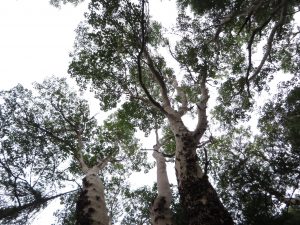
Trees are marvelous.
They can live for more than 4000 years; they thrive in regions from the far north to the equator and from arid conditions to rainforests. They clean the air, beautify our landscapes and add value to our properties.
Trees provide valuable habitat for the conservation and enhancement of wildlife. They benefit the ecosystem both as a live tree, as a standing dead tree and once it has fallen. It is a food source and habitat for mammals, birds, amphibians, insects, fungus and bacteria. Trees can reduce hospital stays. A study looked at hospitalized people that were recovering from surgery. Participants were divided into two groups. The first group had a view of a small stand of trees; the second group’s view was of a brick wall. People with the tree view had a significantly shorter postoperative hospital stay, fewer negative comments and less complaints about headache and nausea. Students who can see trees outside their study environment score higher on test than those who can’t see trees.
Trees situated in the right place can reduce energy needs by shading buildings in the summer, reducing/ eliminating the need for air conditioning. Trees can buffer winds during the winter time; this reduces heat loss from buildings. Tree canopies and its foliage help to reduce soil erosion during heavy rains by slowing the raindrops impact on the ground. Tree roots reduce erosion with their large intertwined web of large and small roots that anchor and hold the soil in place.
Trees sequester Carbon Dioxide (CO2) from the air and stores it in their cells. Removal and burning/ decomposition of the wood will release the stored carbon. Carbon will remain in wood if it is used for buildings, furniture etc.
Large mature trees provide the greatest benefits to its environment. It takes a lot of resources (energy) to establish a young tree, including nursery production, transport, planting, watering, pruning etc. The resources used outweigh the benefits for the first 25 years of a tree’s life. Past 25 years, less resources are needed to maintain it and the benefits it provides will increase as the tree grows in height and girth.
The benefits of trees are far reaching. They add beauty and joy; they reduce energy needs by shading our houses in the summer and calming winter winds; they have a positive affect on learning, well being and health. Plant the right tree in the right place and maintain it so it can become large and benefit both you and future generations.

